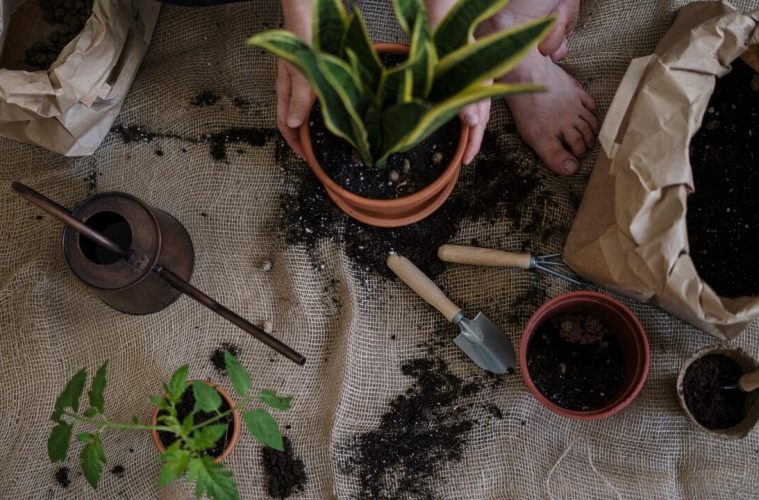No matter which houseplants you own, their age or their size, the task of repotting will come around at some point – and its a chance to make soil mix. Roots growing through the drainage holes of a pot, stunted growth or poor-quality soil are all indicators that your plant needs a new pot, some extra space and, importantly – a new potting soil mix.
If you look at the soil your houseplant came in, you’ll notice a few elements that make it very different from regular soil.
One common element is perlite – small white rocks made from expanded volcanic glass. These particles improve drainage in the soil by increasing the space between soil particles.
You may also see the light brown fibers, usually peat moss or coco peat. This material retains moisture without weighing down a mixture, which is ideal for houseplants that need plenty of oxygen around their roots.
For other hemi-epiphytic houseplants, you may also notice bark chips or vermiculite, depending on the plant and its needs.
These mixtures are combined to provide the perfect conditions for growth. So, when it comes time to repot, changing this mixture drastically is bound to affect plant growth. Using regular potting soil (or worse, using standard soil from the garden) is not suitable for houseplants in lower light conditions that dry out much slower than they would in full sun outdoors.
Keeping conditions around the roots consistent is also important in preventing transplant shock. When soil mixes change suddenly, the plant may struggle to adjust, leading to a period of wilting and yellowing while it recovers.
To prevent these problems, your best option is to make your own soil mix, matching the existing soil texture as much as possible. For most tropical houseplants, you can follow this general ratio, adjusting according to your specific plant’s needs:
- Two parts potting soil
- One part perlite
- One part coconut coir
Repotting is essential and can feel mysterious for newer green thumbs, but it’s not as mysterious or complicated as it may seem – even if you embark on making your own mix.
Feature image via Cottonbro on Pexels
READ MORE: THE DEBATE ABOUT PEAT MOSS


